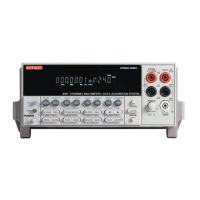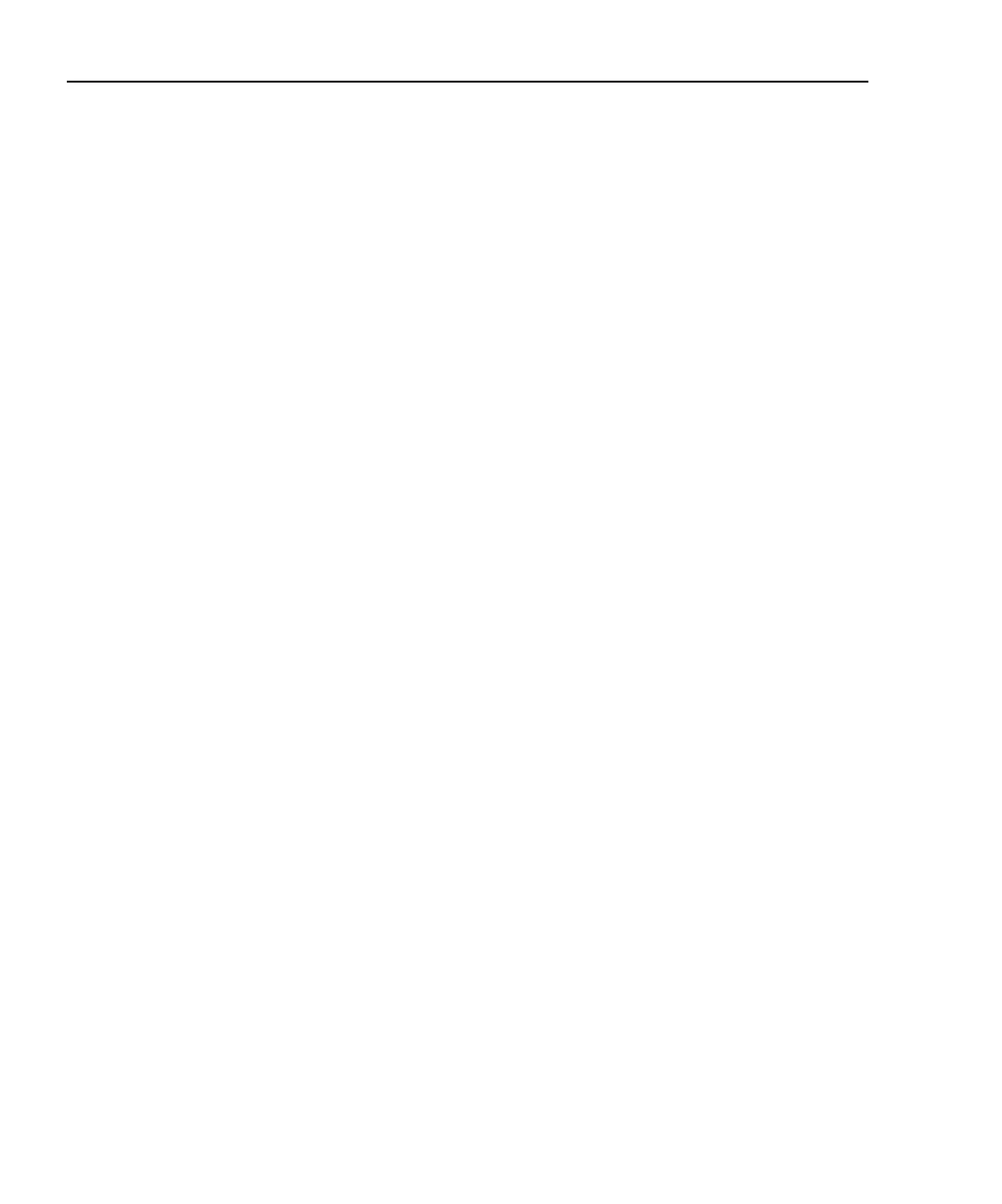9-14 Limits and Digital I/O Model 2701 User’s Manual
Limits and digital outputs programming example
The following command sequence configures the Model 2701 to perform Limit 1 test on a
DCV reading. If the 100mV limit is reached, digital output # 2 will be pulled low. If the
-100mV limit is reached, digital output #1 will be pulled low.
NOTE The following example can be run from the KE2700 Instrument Driver using the
example named “Limits” in Table G-1 of Appendix G.
*RST ’ One-shot measurement mode (DCV).
CALC3:LIM1:UPP 0.1 ’ Set HI1 limit to 100mV.
CALC3:LIM1:LOW -0.1 ’ Set LO1 limit to -100mV.
CALC3:LIM1:STAT ON ’ Enable Limit 1.
CALC3:OUTP:LSEN ALOW ’ Set logic sense to active low.
CALC3:OUTP ON ’ Enable digital outputs.
READ? ’ Trigger and request reading.
CALC3:LIM1:FAIL? ’ Request result of limit 1 test.
Application — sorting resistors
For this application, the idea is to sort a batch of 100Ω resistors into three bins. Bin 1 is for
resistors that are within 1% of the nominal value. Bin 2 is for resistors that exceed 1%
tolerance, but are within 5%. Bin 3 is for resistors that exceed 5% tolerance.
The digital outputs of the Model 2701 can be used to further automate the test system by
controlling a compatible component handler to perform the binning operations.
Limits
Limit testing is used to test resistor tolerances. Figure 9-6 shows a basic setup using
4-wire offset-compensated ohms to test 100Ω resistors.

